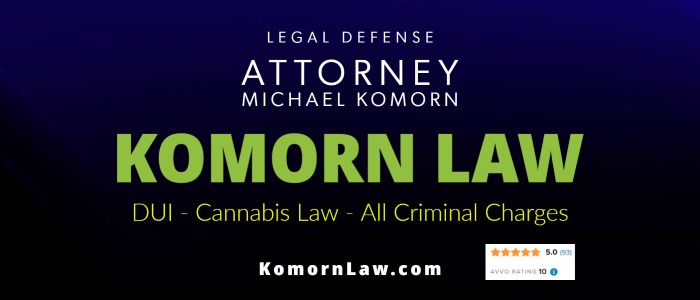Opinion
Case No. 2:17-cv-12040
12-12-2017
GINNIFER HENCY, et al., Plaintiffs, v. ST. CLAIR COUNTY, et al., Defendants.
HONORABLE STEPHEN J. MURPHY, III
OPINION AND ORDER GRANTING DEFENDANT KEYES’S MOTION TO DISMISS [6] AND GRANTING IN PART AND DENYING IN PART DEFENDANTS’ MOTION TO DISMISS [5]
The case arises from a failed marijuana prosecution by St. Clair County. Three of the Plaintiffs were running what they thought were lawful medical marijuana enterprises. St. Clair County disagreed, and raided the homes and business of the Plaintiffs. The Plaintiffs’ children were present for the raids, and the officers conducting the search allegedly went too far in their destruction and seizure of property. The Plaintiffs running the operation, and their children, brought suit against the county, a prosecutor, and the officers involved.
Two motions to dismiss are now before the Court. Defendant Keyes seeks to dismiss all counts against her on immunity grounds. The remaining Defendants’ motion seeks to dismiss only two counts: Count Five and Count Nine. The Court held a hearing on the motions. For the reasons below, the Court will grant Keyes’s motion, and partially grant the other Defendants’ motion.
Count Five alleges assault and battery, and Count Nine seeks to bar Defendants from receiving federal funds under 42 U.S.C. § 3751(b). ——–
BACKGROUND
The St. Clair County Prosecutor’s Office suspected illegal marijuana sales were occurring at DNA Wellness, a “medical marijuana alternative wellness center” in Kimball, MI owned by Dale and Annette Shattuck. To establish probable cause for a search, the County used confidential informants, who posed as buyers and purchased marijuana at the store. On July 27, 2014, the St. Clair County Drug Task Force (DTF) used the informants’ information to secure narcotics search warrants for three locations: (1) the DNA Wellness Center; (2) the associated growing facility down the street, and (3) the Shattucks’ home in Port Huron. DTF executed the three search warrants the next day.
At DNA, DTF took the Shattucks into custody and questioned them in the backroom of the store. One of the officers then “removed his police markings and assumed the role of an employee manning the reception desk.” ECF 1, PgID 12. When Ginnifer Hency arrived at the store, the officer struck up a conversation, during which she explained that she was a medical marijuana caregiver. The officers searched Hency’s backpack, found six ounces of marijuana, and placed her under arrest. The disguised officer also spoke with four other customers who came into the store and sold marijuana to them. One of the other customers was arrested, while the other three had their medical marijuana cards confiscated.
Following Hency’s arrest, DTF sought a search warrant for her home. When DTF arrived at the home, Mr. Hency was there with his children. They were allowed to leave before DTF searched the home. During the search, DTF seized a host of items, including a car and personal effects. Hency’s and her daughter’s underwear were also strewn about their respective rooms.
Around that time, DTF also searched the Shattucks’ home, where children were present. Here, however, DTF allegedly had more contact with the children before they left. DTF seized a wide swath of items at the Shattuck home and left it damaged and in disarray.
The St. Clair County prosecutor brought charges against the Shattucks and Hency, but the circuit court dismissed the case on the grounds of entrapment by estoppel. The instant suit followed.
STANDARD OF REVIEW
The Court may grant a Rule 12(b)(6) motion to dismiss if the complaint fails to allege facts “sufficient ‘to raise a right to relief above the speculative level,’ and to ‘state a claim to relief that is plausible on its face.'” Hensley Mfg. v. ProPride, Inc., 579 F.3d 603, 609 (6th Cir. 2009) (quoting Bell Atl. Corp. v. Twombly, 550 U.S. 544, 555, 570 (2007)). The Court views the complaint in the light most favorable to the plaintiff, presumes the truth of all well-pled factual assertions, and draws every reasonable inference in favor of the non-moving party. Bassett v. Nat’l Collegiate Athletic Ass’n, 528 F.3d 426, 430 (6th Cir. 2008). If “a cause of action fails as a matter of law, regardless of whether the plaintiff’s factual allegations are true or not,” then the Court must dismiss. Winnett v. Caterpillar, Inc., 553 F.3d 1000, 1005 (6th Cir. 2009).
DISCUSSION
I. Keyes’s Motion to Dismiss All Counts (ECF 6)
Melissa Keyes is a St. Clair County Assistant Prosecuting Attorney. She did not prosecute the criminal case against the Plaintiffs, but allegedly communicated with the police, in advance of the raids, and made two statements: (1) she instructed the deputy “not to perform an inspection” of the Wellness Center, ECF 1, PgID 11, ¶ 49, and (2) she recommended that the police use confidential informants, posing as patients with medical marijuana cards, to establish the probable cause necessary to secure a narcotics search warrant, id. at ¶ 51. Other than these two paragraphs, Keyes is never again mentioned in the Complaint. She moves to dismiss the counts against her as failing to state a claim. She relies for authority on theories of sovereign and prosecutorial immunity.
To the extent Keyes is sued for damages concerning actions she took in her role as prosecutor, she is protected by both forms of immunity. The Eleventh Amendment “bars § 1983 suits against a state, its agencies, and its officials sued in their official capacities for damages,” and, in Michigan, a prosecutor is a state agent when she prosecutes state criminal charges. Cady v. Arenac Cty., 574 F.3d 334, 342-43 (6th Cir. 2009). If Keyes was functioning as a prosecutor, the damages claims against her in her official capacity are barred. She is likewise protected in her personal capacity by prosecutorial immunity because a prosecutor is entitled to absolute immunity when she “acts as an advocate for the State and engages in activity that is intimately associated with the judicial phase of the criminal process.” Prince v. Hicks, 198 F.3d 607, 611 (6th Cir. 1999) (quoting Imbler v. Pachtman, 424 U.S. 409, 430-31 (1976)) (quotation marks omitted).
But when a prosecutor performs functions unrelated to the preparation of a prosecution or judicial proceedings, she is not entitled to absolute immunity. Buckley v. Fitzsimmons, 509 U.S. 259, 273 (1993). When a prosecutor who performs the work of a detective or police officer—for instance, searching for the clues to give her probable cause to recommend an arrest—she is entitled to “at most” qualified immunity. Prince, 198 F.3d at 611. Keyes’s alleged recommendations concerning inspections and confidential informants occurred before the existence of probable cause, so as for liability arising from those statements, the most she is entitled to is qualified immunity.
The Supreme Court has encouraged courts to evaluate qualified immunity under a two-step approach. Pearson v. Callahan, 555 U.S. 223, 236 (2009) (noting that although the protocol set forth in Saucier v. Katz, 533 U.S. 194 (2001) is not mandatory, “it is often beneficial”). First, the Court decides whether the facts that a plaintiff has alleged amount to a violation of a constitutional right, and second, the Court decides “whether the right at issue was ‘clearly established’ at the time of defendant’s alleged misconduct.” Pearson v. Callahan, 555 U.S. 223, 232 (2009). “A defendant bears the initial burden of putting forth facts that suggest that he was acting within the scope of his discretionary authority” but ultimately, “the burden of proof is on the plaintiff to show that the defendants are not entitled to qualified immunity.” Stoudemire v. Michigan Dep’t of Corr., 705 F.3d 560, 568 (6th Cir. 2013) (internal citation and quotation marks omitted).
At the outset, some clarification of the alleged constitutional violations is necessary. Defendants insist that there was no clearly established right “to an inspection of [a] facility that was selling an illegal Schedule I drug” or “to be free from a criminal investigation with the use of confidential informants,” so even if Keyes made the alleged recommendations to the police, she cannot be liable. ECF 6, PgID 121. But Plaintiffs do not argue that these actions, in and of themselves, violated the Constitution. Rather, they proceed on a chain-of-causation theory: the raids and prosecution violated Plaintiffs’ rights and they would not have occurred had Keyes not advised the police as she did. And under § 1983, an official can cause a constitutional violation if she “sets in motion a series of events” that she knew or reasonably should have known would cause others to deprive plaintiff of constitutional rights. Jenkins v. Rock Hill Local Sch. Dist., 513 F.3d 580, 589-90 (6th Cir. 2008). The analysis, therefore, must focus on the alleged violations that occurred subsequent to Keyes’ direct involvement, and her anticipation of those violations.
Plaintiffs allege that constitutional violations occurred at three points: (1) when certain “Government officials . . . affirmatively assured the Plaintiffs that the[ir] conduct was legal,” thereby entrapping them by estoppel in violation of the 14th Amendment’s Due Process Clause, ECF 1, PgID 23; (2) when DTF “utilized unnecessary, unjustified, unreasonable and excessive force” in violation of the Fourth Amendment, id. at 20; and (3) when Defendants seized and retained property in the course of their searches, thereby depriving Plaintiffs of their right “to a fair and impartial administration of justice guaranteed by the Due Process Clause of the Fourteenth Amendment,” id. at 29.
The latter two violations immediately fall by the wayside. Even taking every allegation of the Complaint as true, there is nothing to suggest that Keyes knew or reasonably could have known the manner by which DTF would conduct the raids or what it would do with items seized. Plaintiffs are left to show that Keyes knew or reasonably could have known that government officials would pursue Plaintiffs through entrapment by estoppel.
Again, the Complaint makes scant mention of Keyes. Concerning Keyes’s knowledge, the Complaint states only that Keyes knew the Shattucks had invited the police to “do a walk through” of their facilities and that the police had informed the Shattucks that “they had nothing to worry about” since a police deputy would be in touch “if there were any issues.” ECF 1, PgID 11. Concerning her actions, the Complaint states only that she advised the police against doing an inspection and recommended the use of confidential informants. The Complaint is otherwise silent on what Keyes knew about investigations of Plaintiffs, much less that she knew or should have known that a prosecution would follow. Moreover, entrapment by estoppel is not a foregone conclusion even when a person is misadvised, for “when a citizen who should know better unreasonably relies on the agent’s erroneous statement, or when the ‘statement’ is not truly erroneous, but just vague or contradictory, the defense is not applicable.” People v. Woods, 241 Mich. App. 545, 548-49 (2000).
Plaintiffs have not alleged facts above the speculative level that support the claim that Keyes, while acting in a non-prosecutorial capacity, knew or should have known that government officials would violate Plaintiffs’ clearly established constitutional rights. She is therefore entitled to qualified immunity as to her alleged non-prosecutorial actions.
That still leaves the claim for injunctive relief against Keyes in her official capacity, because the Eleventh Amendment does not categorically bar such a claim. See Papasan v. Allain, 478 U.S. 265, 278 (1986). But merely styling the claim as “injunctive” does not guarantee its actionability; the plaintiff must be seeking relief from a continuing violation of federal law. Id. Although such actions may proceed “even though accompanied by a substantial ancillary effect on the state treasury,” an action is barred when the relief sought “in essence serves to compensate a party injured in the past by an action of a state official in his official capacity that was illegal under federal law[.]” Id.
Plaintiffs claim they “are seeking to enjoin the prosecutor from participating with federal agents in medical marijuana cases,” ECF 9, PgID 177, and the Complaint requests “[i]njunctive relief precluding the Defendants from engaging in the conduct herein and [in] the future and requiring the County, the Sheriff’s Department, and the DTF to provide proper policy, training and supervision of its officers and to them accountable for their misconduct,” ECF 1, PgID 21. But Plaintiffs have not shown how Keyes’s actions violated federal law. See infra. Consequently, they have not shown why or how enjoining Keyes would prevent the continuing violation of federal law. Accordingly, all claims against her will be dismissed in their entirety.
II. Defendants’ Motion to Dismiss Counts Five and Nine (ECF 5)
The rest of the Defendants move to dismiss only two of the twelve counts. They argue that the statute of limitations has run on the assault and battery claims in Count Five and that the federal law asserted in Count Nine does not provide a private cause of action. At the motion hearing, Plaintiffs agreed to voluntarily dismiss Count Nine in its entirety, so the Court will consider here only Count Five.
The statute of limitations for assault and battery is two years. Mich. Comp. Laws § 600.5805(2). The alleged acts in the case occurred three years ago. Nevertheless, Plaintiff insists that the assault-and-battery count (Count Five) is not time-barred because § 1983 actions are governed by the statute of limitations for personal injury, which is three years. This argument falls flat as to Count Five, however, because that count is merely a tort claim; it does not rely on § 1983.
Plaintiff’s second argument is that the Plaintiff children’s infancy tolled the statute of limitations. The time to file the assault and battery counts would indeed be tolled by infancy, but it is not instantly clear whether Plaintiffs have actually pled assault and battery against the minor Plaintiffs. Count Five simply reads:
125. The Individual Defendants acted with the intent to cause harmful or offensive contact to plaintiffs and acted with the intent to create apprehension of some harmful or offensive contact with them.
126. Harmful or offensive contact with plaintiffs resulted.
127. As a result of the Individual Defendants outrageous conduct plaintiffs have been directly and proximately harmed.
ECF 1, PgID 24. And the Complaint only references the children a few times:
¶ 62-63. “When the police arrived at the Hency residence Ginnifer Hency’s husband . . . was given the option of leaving with the children for the next few hours, while the raid was performed, or being driven to the police department to wait. Dean Hency decided to pile his children . . . into his vehicle and ended up waiting with them at a nearby McDonalds. While waiting at the McDonalds, [his daughter] . . . experienced complications from a recent surgery involving a blood clot [and] suffered severe physical and emotional trauma when blood began to seep out of her bandage in the McDonalds restaurant.”
¶ 72. “Upon entry, DTF came into contact with Lori Lee and the children, and while armed and wearing ski masks, the officers kept the children separated from their grandmother at gunpoint.”
¶ 73. “DTF proceeded to lineup the five children on the couch with guns drawn, all the while refusing to even remove their masks to help calm the terrified children down, which included two three-year-old toddlers,
refusing their requests to see their grandma. During the same time span DTF threatened to kill the Shattuck[s’s] pet dog.”
Id. at 13-15. Defendants contend that these passages do not contain an “allegation that there was any physical ‘contact’ between Defendants and any of the minor Plaintiffs.” ECF 10, PgID 221.
In Michigan, an assault is “any intentional unlawful offer of corporal injury to another person by force, or force unlawfully directed toward the person of another, under circumstances which create a well-founded apprehension of imminent contact, coupled with the apparent present ability to accomplish the contact.” Smith v. Stolberg, 231 Mich. App. 256, 260 (1998) (quoting Espinoza v. Thomas, 189 Mich. App. 110, 119 (1991)). A battery is “the wilful and harmful or offensive touching of another person which results from an act intended to cause such contact.” Id.
Legal conclusions, such as the occurrence of battery, can provide the complaint’s framework, but “they must be supported by factual allegations.” Ashcroft v. Iqbal, 556 U.S. 662, 679 (2009). Plaintiffs’ singular reference to actual contact is paragraph 126, which is a mere conclusory statement. All of the minor Plaintiffs’ battery claims will be dismissed.
The allegation of assault, on the other hand, is sufficiently pled by four of the minor Plaintiffs. In the Complaint, Plaintiffs allege that the DTF officers ordered Keaton, Talan, Gavin, and Kaley about at gunpoint, and threatened to kill their dog. ECF 1, PgID 15. A child faced with these circumstances would have a well-founded apprehension of imminent contact and would reasonably perceive the officers’ present ability to accomplish the contact. The other minor Plaintiffs, however, have not pled particularized facts, so their assault claims will be dismissed.
The non-minor Plaintiffs’ assault and battery claims will be dismissed because the statute of limitations has run as to them.
ORDER
WHEREFORE, it is hereby ORDERED that Defendant Keyes’s Motion to Dismiss [6] is GRANTED.
IT IS FURTHER ORDERED that the other Defendants’ Motion to Dismiss [5] is GRANTED IN PART AND DENIED IN PART:
• Count Nine is DISMISSED as to all Defendants.
• The claims in Count Five of Ginnifer Hency, Dean Hency, Stephanie Jones, Jason Jones, Lauren Jones, Mackenzie Jones, and Lori Lee in their personal and representative capacities, and the claims of Dale and Annette Shattuck in their personal capacities are DISMISSED.
• All Plaintiffs’ battery claims in Count Five are DISMISSED.
SO ORDERED.
s/Stephen J. Murphy, III
STEPHEN J. MURPHY, III
United States District Judge
Dated: December 12, 2017 I hereby certify that a copy of the foregoing document was served upon the parties and/or counsel of record on December 12, 2017, by electronic and/or ordinary mail.









